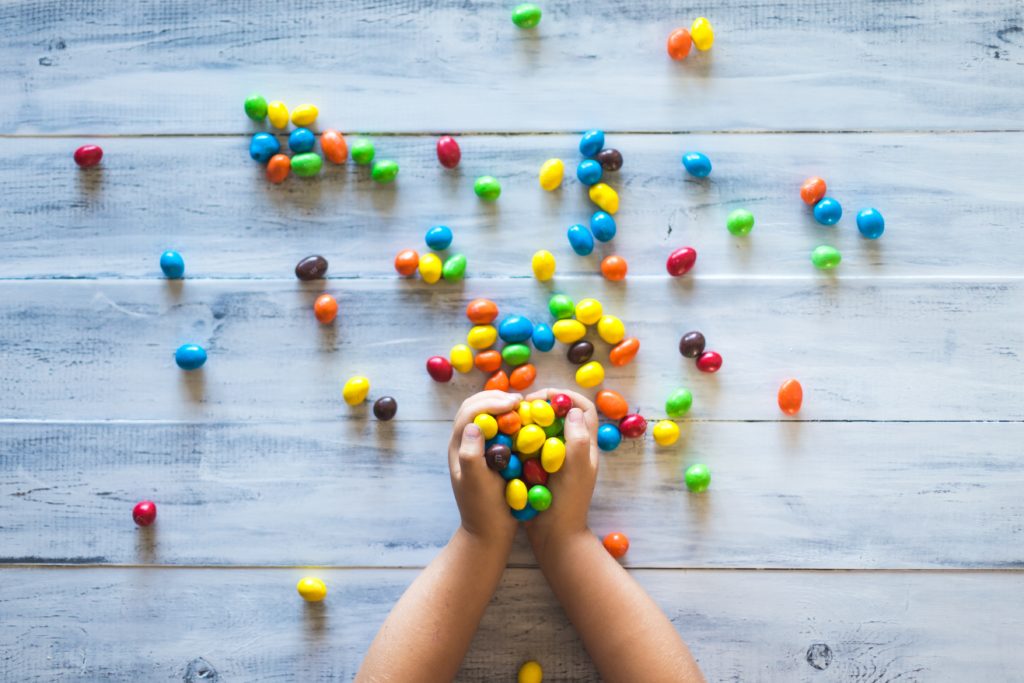All fields are required
Posted in Food Safety on November 4, 2018

Halloween has come and gone, and as a parent, I now have loads of candy laying around my home. Trick or Treating, Halloween parties, relatives, etc. have blessed us with an abundance of sweets, and there is a special day to enjoy them just a little more than the rest of the year. November 4th gives us National Candy Day in all of its glory. So grab your toothbrush and let’s dig in.
I am a candy lover and fully believe in the art of the “candy tax” after my boys go out and get their trick or treat candy. They don’t like sweets much, but I find myself having a little afternoon craving for something sweet. I always wondered though where did candy come from? Have people always had a sweet tooth?
National Day Calendar gives us some fun candy facts:
It was in the late 13th century that the Middle English word candy began to be used, coming into English from the Old French cucre candi, derived in turn from Persian Qand and Qandi, cane sugar.
People use the term candy as a broad category that includes candy bars, chocolates, licorice, sour candies, salty candies, tart candies, hard candies, taffies, gumdrops, marshmallows and much more.
Way back in time, before sugar was readily available, candy was made from honey. The honey was used to coat fruits and flowers to preserve them or to create forms of candy. There is still candy that is served in this way today, but it is typically seen as a garnish.
Originally a form of medicine, candy calmed the digestive system or cooled a sore throat. At this time, combined with spices and sugar, candy only appeared in the purses and the dishes of the wealthy.
It was in the 18th century that the first candy is believed to have come to America from Britain and France. At this time, the simplest form of candy was Rock Candy made from crystallized sugar. However, even the basic form of sugar was considered a luxury and was only attainable by the wealthy.
Since 1979, the world has produced more sugar than can be sold, making it very attainable and cheap.
When the technological advances and the availability of sugar opened up the market in the 1830s, the candy business underwent a drastic change. Candy was not only for the enjoyment of the well to do but the pleasure of everyone. Penny candies became popular, targeting children.
Speaking of “penny candy” I recall my grandparents discussing that often. There were candies that were 2 for 1 cent! Can you even imagine if this was a thing today? The cheapest I ever remember candy being was 10 cents or taking a sample from the Brachs bin at the grocery store and leaving some change. I loved these nougat candies that had jelly fruits inside. I remember getting a little older and candy then being a quarter at some of the local dollar stores, the sample bins disappearing and of course these days it is hard to find much candy under a dollar. Time marches on.
The two top-selling candies in America have been:
Mental Floss gives us some fun facts about candy and some will blow your mind–
How will you spend National Candy Day? I know I will most certainly indulge in something sweet and tasty, just not sure which one yet. Lately my favorites include snack size Twix bars as well as 3 Musketeers. This time of year I find myself looking at mallow pumpkins and candy corn as well.
Enjoy this year’s National Candy Day and be sure to have something sweet to celebrate this special day! Happy Sugar Rush!
By: Samantha Cooper, Contributing Writer (Non-Lawyer)